About ActiveCare Physical Therapy®
The Best Physical Therapists in NYC
-
Our therapists are licensed in New York State and active members in the American Physical Therapy Association. We have advanced training in joint mobilization and myofascial release techniques.
-
We are dedicated practitioners with a passion for the profession and a comprehensive, holistic approach to treatment and healing. We treat each patient as an individual and treat the whole person, with a plan of care designed to meet the patient’s set goals for health, functionality and a return to work, tasks and activities. We network with a team of physicians, chiropractors, acupuncturists and massage therapists in order to provide guidance to other modalities that may be effective in the patients’ care. We also offer superior Telehealth services for physical therapy.
-
Physical Therapist and owner Dr. Karena Wu PT, DPT, OCS is a graduate of the Program in Physical Therapy at Columbia University and is affiliated with several healthcare organizations in New York City. She is certified as a Strength and Conditioning Specialist, Kinesio Taping Practitioner and Pilates Instructor, and uses SpiderTech Taping. She is also a Certified Orthopedic Manual Therapist, Strength and Conditioning Specialist, Graston Technique® Specialist and Pilates Instructor. She holds LSVT BIG, FMS and SFMA Level 1 certifications as well. Dr. Wu also specializes in vertigo and temporomandibular joint disorders.
-
ActiveCare is primarily an out-of-network facility. We accept all insurance with out-of-network benefits and file for most major insurance plans. We work with all prospective patients to create workable payment plans regardless of insurance coverage.
-
ActiveCare accepts Medicare, No-Fault and Workers’ Compensation patients depending on schedule availability.
-
ActiveCare’s administrators provide seamless and efficient concierge-style client service to all of our patients. And the whole ActiveCare team makes sure your time with us is a beneficial, productive and enjoyable experience.
Quick Links
Manual Therapy Bursitis Plantar Fascitis Meniscus Tears Labral Tears Kinesiology Taping Pilates Rehab
Visit Our Main Website:
www.ActiveCarePhysicalTherapy.com
Blog Posts Are Below:
* We Accept Medicare | No Fault | Workers Comp *
Happy New Year from ActiveCare Physical Therapy!
Dear ActiveCare PT Family,
Happy New Year! We hope you had a wonderful holiday season and are feeling refreshed and ready for a fresh start.
As we head into the new year, we want to sincerely thank you for choosing ActiveCare PT and trusting us with your care. It truly means so much to our entire team.

The beginning of the year is a great time to check in with your body and your movement. Staying consistent with your exercises, keeping your body moving throughout the day, and paying attention to the small things can make a big difference over time. As owner and Clinical Director, Dr. Karena Wu, often reminds patients, “Meaningful progress comes from consistent, high quality movement and individualized care.”
As we move through January, you may hear from our front desk team about updating some routine paperwork, including insurance information and patient care contracts, as many plans renew at the start of the year. If you have any questions, Kanal, our Director of Business Development, is always happy to help.
Wishing you a healthy, happy, and active New Year! We look forward to continuing to work with you and supporting you in the months ahead.
Warmly,
The ActiveCare Physical Therapy Team
Merry Christmas & Happy Holidays from ActiveCare Physical Therapy
As the year ends, the ActiveCare Physical Therapy team celebrates in front of a holiday tree decorated with ornaments signed by our patients. Each name represents trust, healing, and community.
Dr. Karena Wu, Owner and Clinical Director, says, “Seeing our patients’ names on the tree reminds us that true healing happens through connection and compassionate care.”

This season, keep moving with light activity and mindful posture. Physical therapy is not just for injuries, it is a proactive way to maintain strength and mobility. Schedule an evaluation to start the new year feeling your best.
Thank you for being part of the ActiveCare Physical Therapy community.
Merry Christmas & Happy Holidays from ActiveCare Physical Therapy!
__________________
ActiveCare Physical Therapy, PC
www.bestptnyc.com
29 West 38th Street, #601
New York, NY 10018
212-777-4374 office
212-901-6992 fax
917-916-0136 mobile
ActiveCare Physical Therapy, Pvt Ltd
Prabhadevi Industrial Estate
Unit No. 9, Ground Floor
Veer Savarkar Marg, Prabhadevi
Mumbai 4000215 India
+91-022-24220122 office
Meet Dr. Kiernan Monaco, PT, DPT
 Dr. Kiernan Monaco is a highly skilled and compassionate Doctor of Physical Therapy dedicated to helping individuals restore movement, reduce pain, and return to the activities they love. Known for her patient-centered approach and commitment to clinical excellence, she combines evidence-based treatment with genuine care and empathy.
Dr. Kiernan Monaco is a highly skilled and compassionate Doctor of Physical Therapy dedicated to helping individuals restore movement, reduce pain, and return to the activities they love. Known for her patient-centered approach and commitment to clinical excellence, she combines evidence-based treatment with genuine care and empathy.
A proud Long Island, NY native, Dr. Monaco earned her Bachelor of Science in Exercise Science with a Minor in Strength and Conditioning from the University of Delaware. During her undergraduate years, she developed a strong foundation in human movement and injury prevention, while also working as a certified cycle instructor, blending her love for fitness and teaching.
Her passion for physical therapy expanded globally when she traveled to New Zealand to study the international impact of the profession. She later earned her Doctorate in Physical Therapy from Long Island University in Brooklyn, where she continued to grow as a clinician and advocate for holistic, functional rehabilitation.
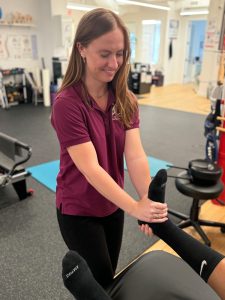 Dr. Monaco is deeply committed to lifelong learning and advancing rehabilitation care. She participated in a global health service trip to Ghana, where she provided hands-on therapy for children with special needs and gained invaluable insight into community-based care. Her interest in innovative treatment approaches also led her to conduct research on virtual reality in pediatric physical therapy, which was accepted for presentation at the APTA New York 2025 Conference.
Dr. Monaco is deeply committed to lifelong learning and advancing rehabilitation care. She participated in a global health service trip to Ghana, where she provided hands-on therapy for children with special needs and gained invaluable insight into community-based care. Her interest in innovative treatment approaches also led her to conduct research on virtual reality in pediatric physical therapy, which was accepted for presentation at the APTA New York 2025 Conference.
Her treatment philosophy is rooted in treating the whole person, not just the injury. Kiernan focuses on long-term wellness, functional movement, and empowering patients to take an active role in their recovery and health journey
To schedule an appointment with Dr. Kiernan Monaco, call or email ActiveCare Physical Therapy today.
ActiveCare Physical Therapy™
29 West 38th Street, Suite 601
New York, NY 10018
Phone: (212) 777-4374
Email: staff@bestptnyc.com
Website: https://activecarephysicaltherapy.com
Move Well This Thanksgiving
The 2025 Thanksgiving season brings travel, cooking, and celebration, and all of it can place extra stress on your body. At ActiveCare Physical Therapy, we want you to enjoy the holiday without discomfort.
Dr. Karena Wu, Clinical Director and Owner, reminds us: “The body thrives on movement. Even a few minutes of activity during busy holidays can prevent stiffness and keep you feeling your best.”
Quick tips for a healthier Thanksgiving:
- Take movement breaks: Stand, stretch, or walk every hour during long travel or long meals.
- Balance big meals with a short walk: A brief walk can support digestion and reduce stiffness.
- Protect your back in the kitchen: Shift your weight, keep essentials within easy reach, and stretch when you can.
- Stay hydrated: Water helps your muscles stay flexible.
If discomfort or pain lingers, the team at ActiveCare Physical Therapy is ready to help you feel better and move better this season.
Contact us at 212-777-4374 to schedule your next session and start the holidays feeling your best.
Wishing you a healthy and comfortable Thanksgiving from the team at ActiveCare Physical Therapy!
Recover Faster After the NYC Marathon — Free 15-Minute Recovery Sessions at ActiveCare PT by Bryant Park!
Just crossed the NYC Marathon finish line? Congratulations! You’ve put your body through an incredible test of endurance; now it’s time to give it the recovery it deserves. Join us at ActiveCare Physical Therapy by Bryant Park for a FREE 15-minute Recovery Session designed to help marathon runners bounce back faster and feel their best.
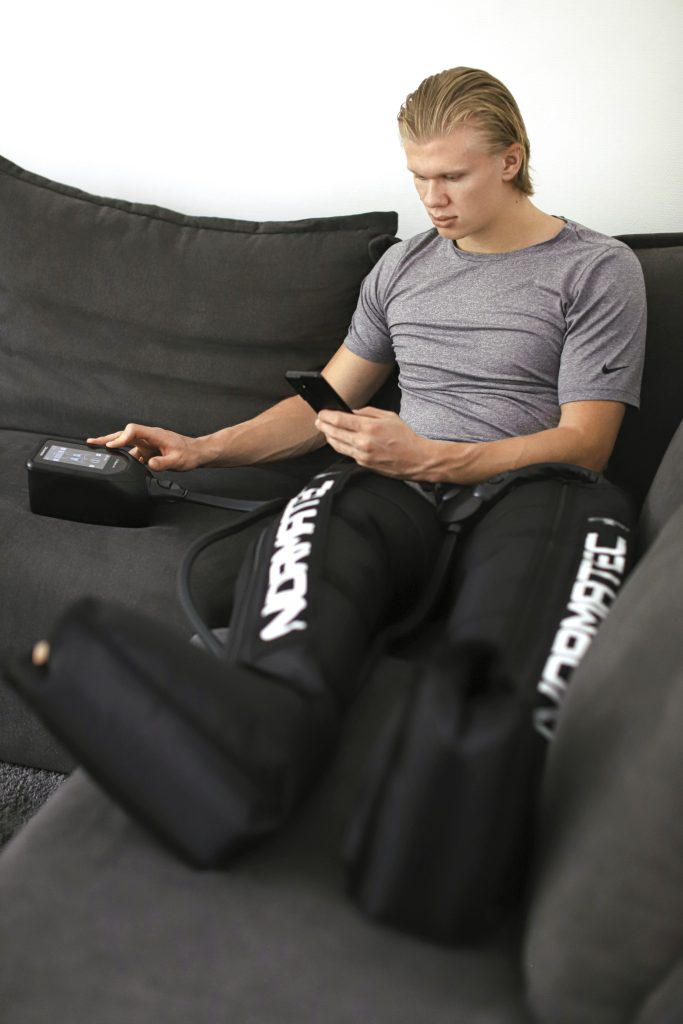
All you need to do is bring your finisher’s medal to gain exclusive access to our intermittent compression boots, which help reduce muscle soreness, improve circulation, and speed up recovery. These complimentary sessions will be available for three days following the NYC Marathon, but spots are limited so don’t wait to secure yours!
👉 Give us a call at 212-777-4374 to reserve your spot today.
Take Your Performance to the Next Level with a Fit3D Body Scan
While you’re here, experience our Fit3D body scan, a cutting-edge assessment tool that provides a 360° view of your body composition and posture. For athletes and marathon runners, the Fit3D scan delivers invaluable insights — tracking muscle balance, identifying asymmetries, and monitoring changes in body composition over time. This data helps optimize your training, prevent injury, and measure progress beyond what the scale can show.
Recovery and performance go hand in hand, and at ActiveCare PT, we’re here to support both every step of the way.

ActiveCare Physical Therapy™
29 West 38th Street, Suite 601
New York, NY 10018
Phone: (212) 777-4374
Email: staff@bestptnyc.com
Website: https://activecarephysicaltherapy.com
October is National Physical Therapy Month: Hip Health
At ActiveCare Physical Therapy, we are celebrating by focusing on hip health for everyone from athletes to non-athletes and all ages. Whether you are running a marathon, walking your dog, or simply getting in and out of a chair, your hips play a vital role in everyday movement.
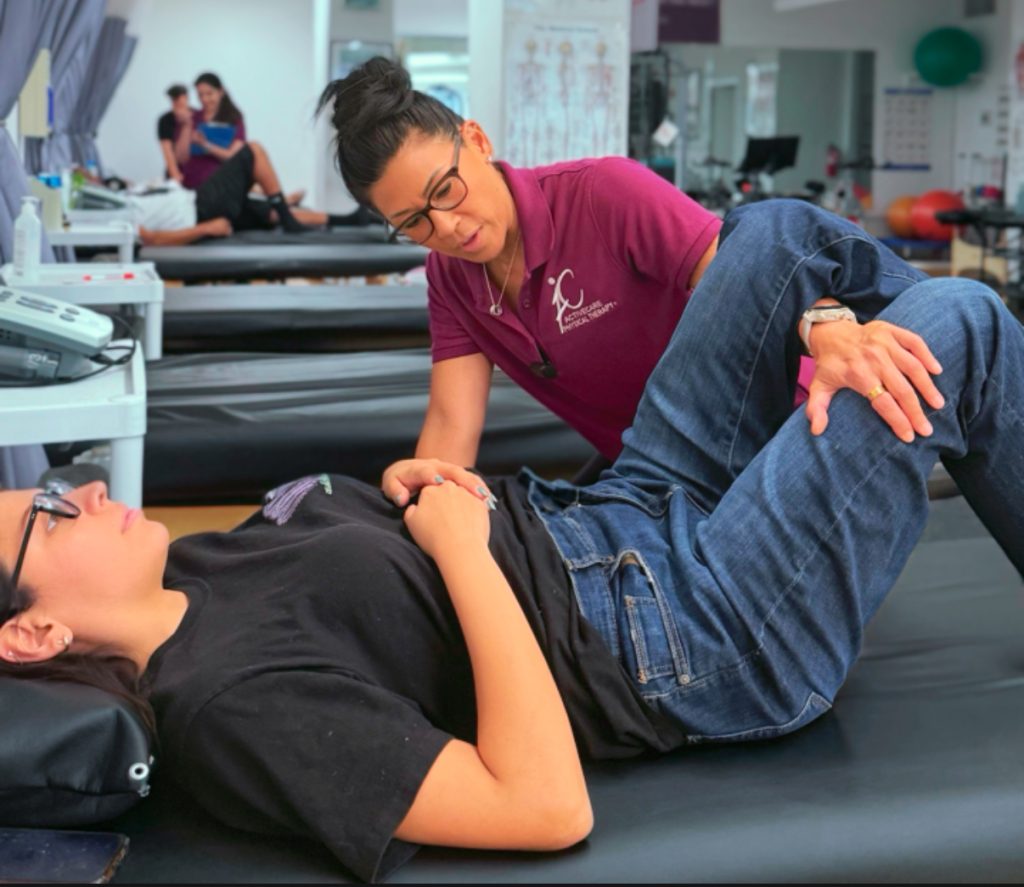
Did you know hip pain and stiffness can limit mobility, affect performance, and lower your quality of life? Physical therapy can help. At ActiveCare PT, we specialize in manual therapy along with targeted exercises to relieve pain, improve strength, and restore function so you can move with ease and confidence.
Dr. Karena Wu, Owner and Clinical Director of ActiveCare PT, says “The hips are the foundation for so much of what we do. Maintaining strength and mobility is key to staying pain free and enjoying life.”
This National PT Month, take the first step toward better hip health. Contact ActiveCare Physical Therapy today to schedule your consultation.
ActiveCare Physical Therapy™
29 West 38th Street, Suite 601
New York, NY 10018
Phone: (212) 777-4374
Email: staff@bestptnyc.com
Website: https://activecarephysicaltherapy.com
How Physical Therapy Can Help Hip Issues at Any Age
Hip issues affect people of all ages and activity levels. From athletes with overuse injuries to older adults managing joint degeneration, the hips are essential for mobility and daily function. Physical therapy is often the first step to relieve pain, restore movement, and prevent further injury.
“Proper diagnosis and targeted rehab are key to long-term relief and injury prevention,” says Dr. Karena Wu, Owner and Clinical Director of ActiveCare Physical Therapy.
Treatment may include manual therapy, strengthening exercises, and education on movement strategies. Physical therapists create personalized plans based on each individual’s needs and goals.
Whether recovering from injury or managing ongoing pain, physical therapy supports hip health and helps you stay active at any age.
Take the first step toward healthier hips. Book your evaluation today at ActiveCare PT!
ActiveCare Physical Therapy™
29 West 38th Street, Suite 601
New York, NY 10018
Phone: (212) 777-4374
Email: staff@bestptnyc.com
Website: https://activecarephysicaltherapy.com
What to Expect During Your First Physical Therapy Session
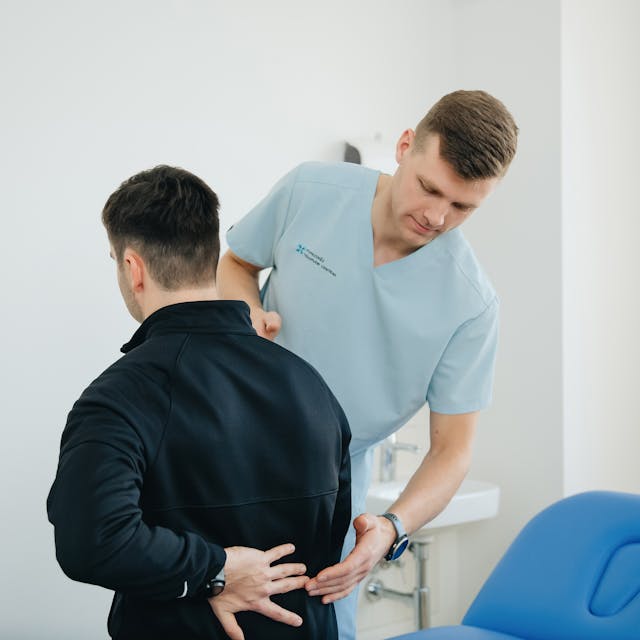 Starting physical therapy can be both exciting and nerve-wracking—especially if it’s your first time. Whether you’re recovering from surgery, managing chronic pain, or trying to improve mobility, understanding what to expect during your first physical therapy session can help you feel more prepared and confident.
Starting physical therapy can be both exciting and nerve-wracking—especially if it’s your first time. Whether you’re recovering from surgery, managing chronic pain, or trying to improve mobility, understanding what to expect during your first physical therapy session can help you feel more prepared and confident.
In this post, we’ll walk you through what typically happens at your first visit, including the evaluation process, common questions your therapist might ask, and how to dress and prepare. At ActiveCare Physical Therapy™ in New York City, our goal is to make your journey toward recovery clear, comfortable, and successful from day one.
Initial Evaluation: Laying the Foundation
Your first physical therapy session will primarily consist of a comprehensive evaluation. This is a critical step where your therapist gathers information to create a customized treatment plan tailored to your goals and needs.
Medical History Review
Expect your therapist to ask about:
- Your current condition or injury—when it started, what aggravates or relieves it
- Your medical history, including surgeries, past injuries, and chronic conditions
- Medications you are taking
- Your lifestyle, job, daily activities, and fitness level
All of this helps your therapist understand how your issue fits into the bigger picture of your health and movement patterns.
Physical Assessment
Once your history is discussed, your therapist will perform a detailed physical assessment that may include:
- Posture and gait analysis: to observe your natural stance and walking mechanics
- Range of motion testing: measuring how well your joints move
- Strength testing: assessing muscle power and endurance
- Palpation: hands-on techniques to feel muscle tension, swelling, or tenderness
- Functional movement screening: observing movements like squatting, bending, or reaching
These tests help identify the root cause of pain or dysfunction—not just where it hurts, but why it hurts.
Discussion of Findings and Goals
After your assessment, your physical therapist will explain their findings in a clear, easy-to-understand way. They will discuss:
- The suspected diagnosis or contributing factors to your symptoms
- Short and long-term goals for your therapy
- A general outline of your treatment plan
- This is also a great time to ask any questions you have about your condition or the therapy process.
First Treatment Begins
In many cases, treatment will begin during your first session. Depending on your condition, this may include:
- Gentle manual therapy or soft tissue work
- Light therapeutic exercises
- Postural or movement corrections
- Modalities such as heat, ice, or electrical stimulation (if appropriate)
The goal is to start you on the path to healing without overwhelming your system. Your therapist will also provide home exercises to reinforce what you learned during the session.
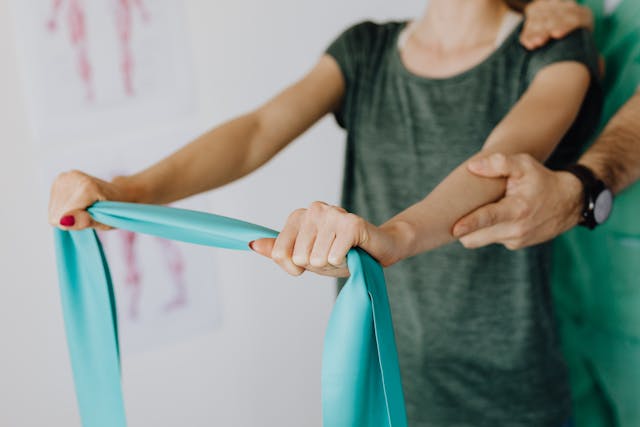
How to Prepare for Your First Visit
To make the most of your session:
- Wear comfortable clothing: Choose attire that allows movement and easy access to the area being treated.
- Arrive early: Give yourself time to complete paperwork and relax before your appointment.
- Bring relevant documents: Include prescriptions, imaging reports, and insurance info.
- Come with questions: Jot down anything you’re curious or concerned about—it’s your time to learn!
What Happens Next?
At the end of your session, your therapist will recommend a frequency for follow-up visits (typically 1–3 times per week) and may give you exercises to do at home. The consistency of your therapy—both in the clinic and at home—plays a major role in how quickly and effectively you recover.
First Physical Therapy Session: Conclusion
Your first physical therapy session is all about assessment, education, and beginning a personalized plan to help you heal. At ActiveCare Physical Therapy™, we prioritize one-on-one care to ensure your treatment is tailored to your body, goals, and lifestyle. By understanding what to expect, you’ll feel more confident and empowered as you begin your recovery journey.
Contact Information
ActiveCare Physical Therapy™
29 West 38th Street, Suite 601
New York, NY 10018
Phone: (212) 777-4374
Email: staff@bestptnyc.com
Website: https://activecarephysicaltherapy.com
How Pilates-Based Physical Therapy Improves Core Strength
Pilates-based physical therapy improves core strength by combining the principles of Pilates with evidence-based rehabilitation techniques, offering a low-impact, highly effective method to restore stability and function. In recent years, this integrative approach has gained popularity among physical therapists, especially in New York City, for its ability to address a wide range of conditions while focusing on controlled movement, posture, and body awareness.
In this post, we’ll explore what Pilates-based physical therapy is, how it improves core strength, who can benefit, and why it’s a powerful tool for injury recovery and prevention.
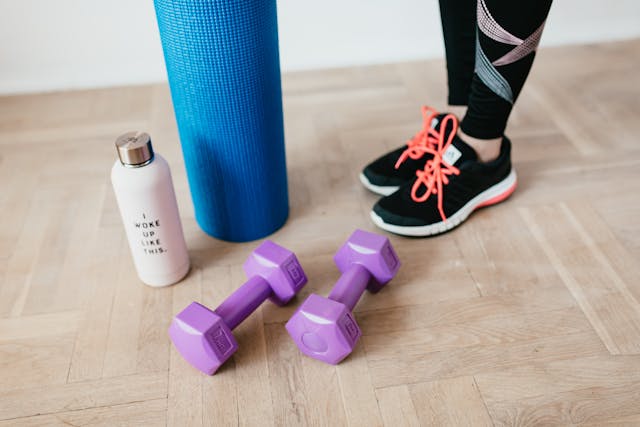
What Is Pilates-Based Physical Therapy?
Pilates-based physical therapy blends traditional physical therapy techniques with the foundational principles of Pilates—such as concentration, control, centering, precision, breath, and flow. It’s typically performed under the guidance of a licensed physical therapist who is also trained in Pilates methodology.
Unlike standard Pilates classes, Pilates-based physical therapy is medically informed and tailored to the patient’s specific needs, goals, and physical limitations. It can be done on a mat or using equipment like the Reformer, Cadillac, or Wunda Chair to challenge core strength and overall body control.
The Importance of Core Strength in Rehabilitation
The “core” refers to more than just your abdominal muscles—it includes the entire musculature surrounding your trunk: the deep abdominals, back muscles, pelvic floor, diaphragm, and hip stabilizers. A strong and coordinated core is essential for:
- Maintaining good posture
- Preventing back and hip injuries
- Improving balance and stability
- Supporting efficient movement patterns in daily life and sports
Many injuries and chronic pain conditions—especially in the lower back, hips, or pelvis—stem from a weak or poorly activated core. Pilates-based physical therapy addresses this by retraining the deep stabilizing muscles and ensuring they function in harmony with the rest of the body.
How Pilates-Based Physical Therapy Improves Core Strength
1. Deep Muscle Activation
Pilates exercises emphasize slow, controlled movements that target the deep muscles of the abdomen, pelvis, and spine. Unlike high-intensity workouts that may bypass these stabilizers, Pilates activates them precisely, promoting spinal alignment and postural endurance.
2. Breathing and Core Coordination
Breathing is integral to Pilates, and therapists teach patients how to coordinate breath with movement. This improves diaphragm function and enhances the connection between breathing and core engagement, which is especially helpful for individuals with chronic back or pelvic floor issues.
3. Movement Re-Education
One of the most powerful aspects of Pilates-based therapy is its focus on quality of movement. Therapists help patients break poor habits and reinforce better mechanics—teaching the body to move efficiently while minimizing strain on joints and tissues.
4. Progressive Resistance
Using spring-based equipment or body weight, Pilates therapy gradually increases resistance, challenging core stability without excessive load. This controlled resistance helps build strength safely, even in patients recovering from surgery or injury.
5. Integration with Functional Activities
Pilates-based exercises mimic daily movement patterns, improving real-world functionality. Whether you’re lifting a grocery bag or running a marathon, a stronger core helps reduce injury risk and improve performance.
Who Can Benefit from Pilates-Based Physical Therapy?
This therapeutic approach is suitable for a wide range of conditions and patient populations:
- Chronic low back pain
- Postpartum core and pelvic floor rehabilitation
- Post-surgical recovery (hip, knee, spine)
- Scoliosis and postural dysfunctions
- Sports injuries and performance enhancement
- General strength and mobility maintenance for aging adults
It’s especially effective for patients who have struggled with traditional rehab or want a gentler but highly targeted approach.
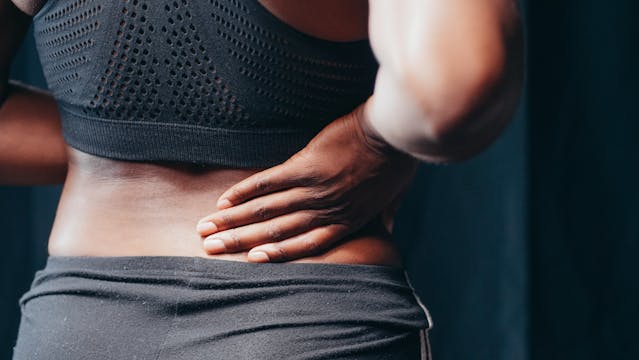
Why Choose a Pilates-Based Physical Therapist?
While Pilates instructors can offer general fitness benefits, physical therapists trained in Pilates provide an expert clinical lens. They evaluate underlying imbalances, injury history, and movement dysfunctions to design a program that supports healing and enhances performance—without pushing beyond safe limits.
Pilates-based physical therapy: Conclusion
Pilates-based physical therapy improves core strength by targeting the deep stabilizing muscles with control, precision, and therapeutic intention. It offers a safe, personalized, and effective way to recover from injury, manage pain, and enhance overall movement quality.
If you’re looking to build a stronger core, reduce back pain, or improve functional fitness, this holistic approach may be the perfect solution. Call ActiveCare Physical Therapy today to schedule an appointment.
Contact Information
ActiveCare Physical Therapy™
29 West 38th Street, Suite 601
New York, NY 10018
Phone: (212) 777-4374
Email: staff@bestptnyc.com
Website: https://activecarephysicaltherapy.com
AVP Tournament Season is Here – Catch the Action and Recover Like a Pro
The Association of Volleyball Professionals (AVP) is back this summer with two exciting tournaments in New York, and our very own Dr. Karena Wu is once again serving as the AVP Medical Director. First up is the AVP Gold Series event at EHP Resort and Marina in East Hampton, NY on June 21 and 22, followed by the highly anticipated AVP New York City Open on July 19 and 20.
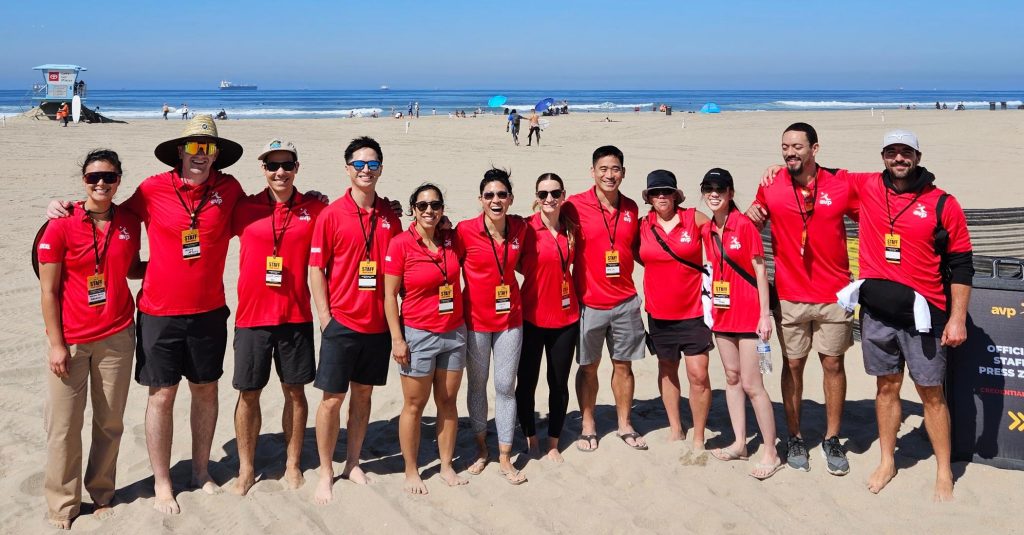
These AVP events bring together the nation’s top beach volleyball athletes and Olympians for high-level competition. Behind the scenes, expert care is essential to keeping them performing at their peak, and that is where Dr. Karena Wu comes in. A renowned physical therapist featured on the TODAY Show and local media, Dr. Wu is also a MAPS instructor and the Board Chair of the NYC Arthritis Foundation. With decades of clinical experience and a specialization in treating volleyball-related shoulder, knee, and back injuries, she is trusted by elite athletes to help them stay healthy and competitive throughout the tournament season.
If you are an athlete or active individual dealing with similar injuries, ActiveCare Physical Therapy in Midtown Manhattan is your go-to destination for expert, personalized care. Dr. Wu leads a dedicated team of orthopedic manual physical therapists who treat sports injuries, orthopedic conditions, and post surgical cases. Whether you need prehab, rehab, injury prevention, or performance training, we are here to help you get back to what you love, pain free.
Click Here to book an appointment.
About ActiveCare Physical Therapy
True orthopedic manual therapy clinic with Pilates-based rehabilitation, kinesiology taping, IASTM, myofascial decompression. Based on the holistic methodology of Dr. Karena Wu. All one on one concierge level physical therapy. Easily accessible from Grand Central or Penn Station, just blocks from the Empire State building.
Holistic Approaches to Physical Therapy for Improved Healing
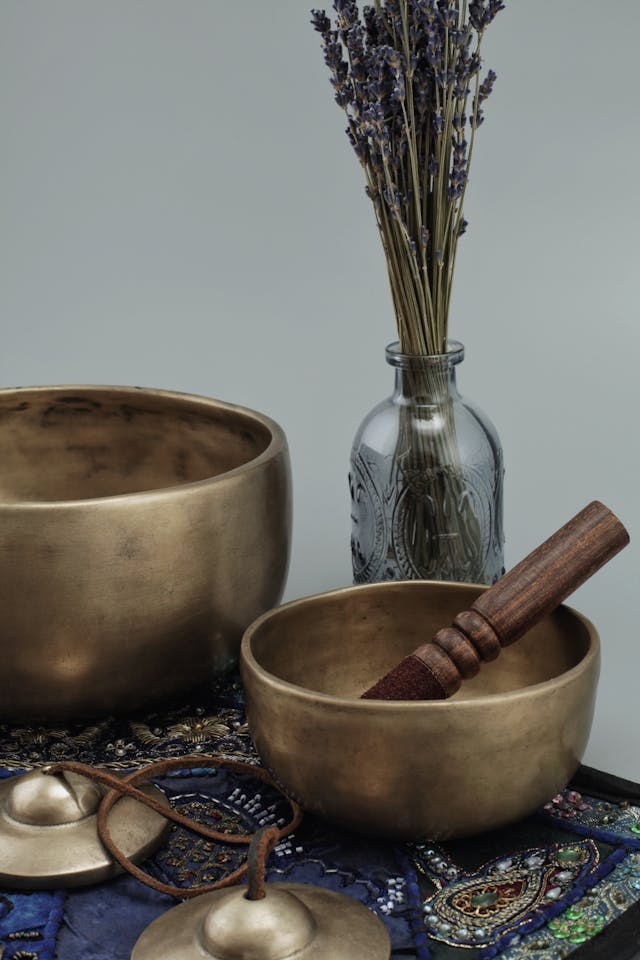 What are the best holistic approaches to physical therapy? In today’s fast-paced, high-stress world, many patients seek more than just symptom management—they want comprehensive care that supports both body and mind. Holistic physical therapy offers exactly that. By combining traditional therapeutic methods with whole-body healing strategies, holistic physical therapy helps patients achieve long-lasting recovery, improved function, and overall well-being.
What are the best holistic approaches to physical therapy? In today’s fast-paced, high-stress world, many patients seek more than just symptom management—they want comprehensive care that supports both body and mind. Holistic physical therapy offers exactly that. By combining traditional therapeutic methods with whole-body healing strategies, holistic physical therapy helps patients achieve long-lasting recovery, improved function, and overall well-being.
This approach recognizes that optimal healing doesn’t happen in isolation. It focuses on how lifestyle, posture, movement, mental health, and even stress levels interact to influence recovery. In this post, we’ll explore the key components of holistic physical therapy and how this integrative approach can lead to better, more sustainable outcomes.
What Is Holistic Physical Therapy?
Holistic physical therapy integrates the physical, emotional, and sometimes spiritual aspects of care. It looks beyond the immediate injury or area of pain and considers the entire body’s interconnected systems.
Unlike traditional models that may only focus on a localized injury, holistic therapists examine factors like:
- Postural habits and movement patterns
- Muscle imbalances and compensations
- Stress levels and emotional health
- Breathing patterns and nervous system regulation
- Nutrition and sleep quality
This approach helps uncover underlying issues that may contribute to pain or dysfunction and ensures the entire body is supported during healing.
Key Holistic Techniques in Physical Therapy
Many top physical therapists incorporate holistic modalities to enhance traditional rehabilitation. Here are some of the most effective techniques:
1. Manual Therapy and Myofascial Release
Hands-on techniques remain a critical element in holistic care. Therapists use myofascial release, soft tissue mobilization, and joint mobilization to restore balance, improve circulation, and release muscle tension throughout the body—not just at the site of pain.
2. Postural Realignment and Movement Education
Correcting posture and body mechanics helps address long-term movement dysfunction. Therapists may use movement retraining to improve gait, sitting posture, breathing patterns, and lifting mechanics, focusing on how the entire body moves and functions together.
3. Breathwork and Nervous System Regulation
Many people with chronic pain or injury hold tension in their breath and body. Holistic therapists may teach diaphragmatic breathing or guided relaxation techniques to calm the nervous system, reduce muscle guarding, and improve oxygenation for tissue healing.
4. Mind-Body Practices
Techniques like yoga, tai chi, or Pilates-based physical therapy are often incorporated to enhance flexibility, balance, and core strength while promoting mindfulness and body awareness.
5. Stress Reduction Strategies
Stress significantly impacts recovery. Holistic therapists often integrate strategies like meditation, progressive muscle relaxation, or guided visualization to help patients manage emotional stress that can exacerbate pain.
The Role of Patient Education
A holistic approach places strong emphasis on educating the patient—not just about exercises, but about how lifestyle habits, sleep, hydration, and stress management all impact healing.
By understanding the interconnected factors that contribute to pain and dysfunction, patients are empowered to take an active role in their recovery. This leads to greater adherence to treatment plans and better long-term results.
Benefits of Holistic Physical Therapy
- Whole-Body Healing: Addresses underlying causes rather than just symptoms.
- Improved Long-Term Outcomes: Patients often experience lasting relief because the root of the problem is treated.
- Stress and Pain Reduction: Nervous system regulation and stress management techniques help decrease chronic pain sensitivity.
- Enhanced Mind-Body Connection: Patients become more aware of how their movement, posture, and stress levels affect their health.
- Greater Patient Satisfaction: Holistic care tends to feel more personalized and comprehensive, leading to higher engagement and satisfaction.
When to Consider a Holistic Physical Therapy Approach
Holistic physical therapy is especially beneficial for patients dealing with:
- Chronic pain conditions like low back pain, neck pain, or TMJ dysfunction
- Recurring injuries that don’t fully resolve
- Postural imbalances and functional movement issues
- Stress-related muscle tension
- Recovery from complex surgeries or long-term immobility
If you’re looking for a treatment plan that considers your entire body and lifestyle—not just your injury—holistic physical therapy may be the ideal solution.
Holistic Approaches to Physical Therapy: Conclusion
Holistic physical therapy offers a truly comprehensive pathway to healing. By addressing the physical, emotional, and functional aspects of your health, this approach promotes deeper recovery and sustainable wellness. Whether you’re managing chronic pain, recovering from injury, or seeking to improve your movement patterns, partnering with a holistic physical therapist can lead to better outcomes and improved quality of life.
Contact Information
ActiveCare Physical Therapy™
29 West 38th Street, Suite 601
New York, NY 10018
Phone: (212) 777-4374
Email: staff@bestptnyc.com
Website: https://activecarephysicaltherapy.com
The Role of Physical Therapy in Post-Surgical Rehabilitation
What is the role of physical therapy in post-surgical rehabilitation? Physical therapy plays a critical role in the healing process after surgery. Whether you’ve had joint replacement, ligament repair, spinal surgery, or a soft tissue procedure, post-surgical physical therapy is essential for restoring strength, mobility, and function. It not only helps speed up recovery but also reduces the risk of complications and long-term impairment.
In this article, we’ll explore how physical therapy supports post-surgical recovery, what the rehabilitation process typically involves, and why it’s a vital step for optimal healing.
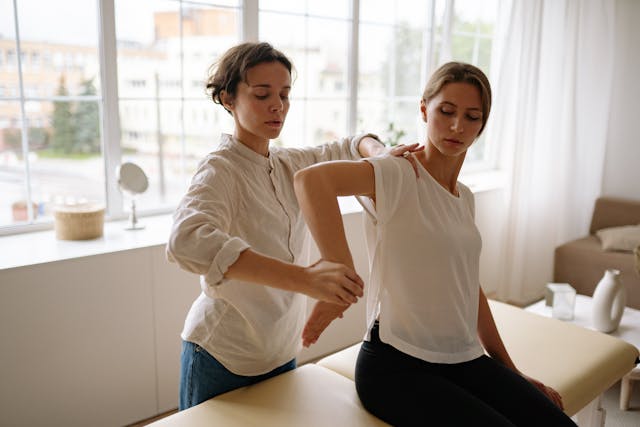
Why Physical Therapy Matters After Surgery
Post-surgical physical therapy rehabilitation is more than just exercise. It is a carefully structured program designed to:
- Restore Mobility: Surgery often leads to joint stiffness or limited movement. Physical therapy helps regain a normal range of motion.
- Build Strength: Muscle weakness is common after surgery due to immobilization and limited activity. Targeted exercises rebuild muscle strength safely.
- Control Pain and Swelling: Manual therapy, movement, and modalities like ice and electrical stimulation can help manage post-operative pain and reduce inflammation.
- Improve Circulation: Movement promotes better blood flow, which aids healing and reduces the risk of complications like blood clots.
- Prevent Scar Tissue Adhesions: Guided mobility exercises minimize scar tissue buildup that can limit flexibility and joint function.
The Post-Surgical Physical Therapy Process
Physical therapy begins at different stages depending on the type of surgery and the surgeon’s protocol. The rehabilitation process typically follows three main phases:
1. Early Recovery Phase
In this phase, the focus is on protecting the surgical site, managing pain and swelling, and beginning gentle range-of-motion exercises. Therapists may also introduce light isometric exercises to prevent muscle atrophy.
2. Strengthening Phase
As healing progresses, the emphasis shifts to regaining strength, improving flexibility, and restoring joint mobility. Physical therapists carefully guide patients through exercises that progressively increase in intensity, while continuously monitoring pain and swelling.
3. Functional Training Phase
The final stage focuses on helping patients return to daily activities, sports, or work-specific tasks. Therapists incorporate functional exercises that simulate real-life movements to ensure patients regain the confidence and ability to resume their normal routine safely.
Common Post-Surgical Conditions Requiring Physical Therapy
Physical therapy is a key component of recovery for many surgical procedures, including:
- Knee replacements and ACL reconstructions
- Hip replacements
- Spinal surgeries, such as laminectomy or discectomy
- Shoulder repairs, including rotator cuff or labral tears
- Foot and ankle surgeries
- Post-abdominal or pelvic surgeries requiring core and mobility rehabilitation
The Benefits of Early Physical Therapy
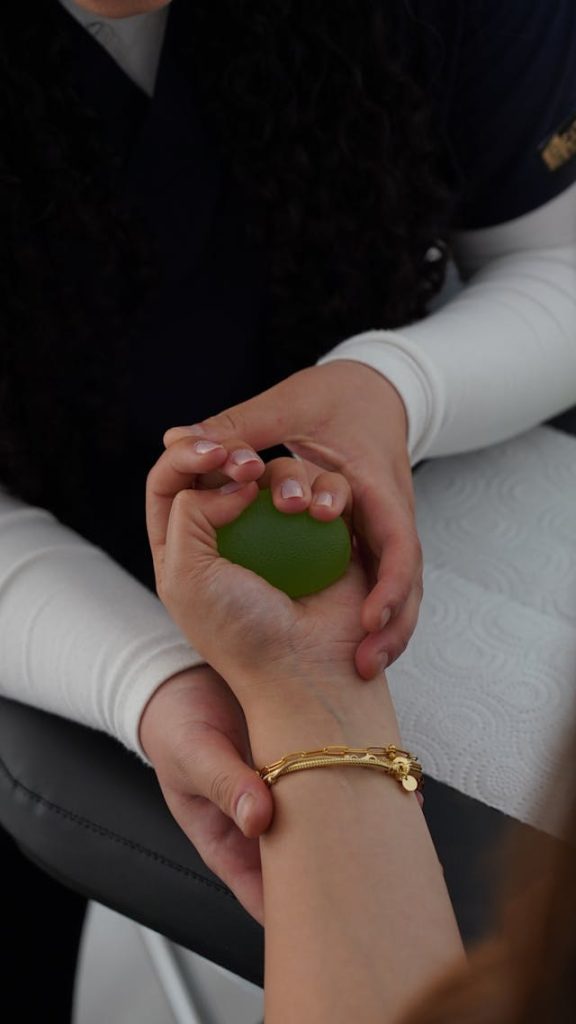 Starting physical therapy soon after surgery—when appropriate—can accelerate recovery and prevent complications. Benefits of early intervention include:
Starting physical therapy soon after surgery—when appropriate—can accelerate recovery and prevent complications. Benefits of early intervention include:
Faster Return to Activity
Early movement helps patients regain functional independence sooner.
Reduced Scar Tissue Formation
Guided motion reduces the risk of adhesions that can limit joint mobility.
Improved Long-Term Outcomes
Structured rehabilitation supports proper joint mechanics and muscle balance, reducing the chance of chronic pain or re-injury.
Patient Education and Long-Term Success
An essential part of post-surgical physical therapy is education. Therapists teach patients how to:
- Protect the surgical site during daily activities
- Use assistive devices like crutches, walkers, or braces correctly
- Perform home exercises safely and effectively
- Recognize warning signs that require medical attention
Educated, engaged patients typically experience better outcomes because they understand how to actively participate in their own recovery.
Physical Therapy in Post-Surgical Rehabilitation: Conclusion
Physical therapy is a vital part of the post-surgical recovery process. It helps patients rebuild strength, regain mobility, and return to their everyday activities safely and efficiently. The best outcomes result from a collaborative effort between the surgeon, physical therapist, and patient. If you’re preparing for surgery or are currently in recovery, partnering with an experienced physical therapist can make all the difference in achieving a full and lasting recovery.
Contact Information
ActiveCare Physical Therapy™
29 West 38th Street, Suite 601
New York, NY 10018
Phone: (212) 777-4374
Email: staff@bestptnyc.com
Website: https://activecarephysicaltherapy.com
Top Techniques Used by the Best Physical Therapists in NYC
Let’s explore the top techniques used by the best physical therapists in NYC and how these methods can accelerate healing and long-term wellness. New York City is home to some of the most advanced and highly skilled physical therapists in the world. From elite athletes to busy professionals and chronic pain sufferers, patients in NYC seek top-level care that blends evidence-based practices with personalized attention. The best physical therapists don’t just treat symptoms—they utilize a range of specialized techniques to identify root causes, restore function, and improve overall quality of life.
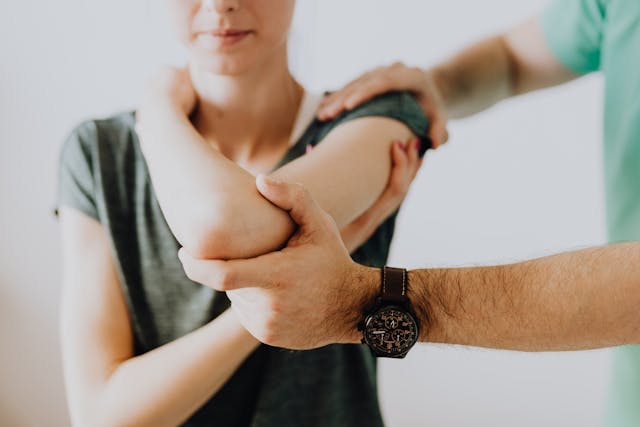
1. Manual Therapy
Manual therapy is a cornerstone of high-level physical therapy care. It involves hands-on techniques that mobilize joints, release muscle tightness, and improve soft tissue function.
- Joint Mobilization: Gentle, targeted movements to improve joint range of motion and reduce stiffness.
- Soft Tissue Mobilization: A form of massage aimed at breaking up scar tissue, improving circulation, and reducing muscle tension.
- Myofascial Release: A technique that addresses tight fascial layers (connective tissue) that can restrict movement and cause pain.
2. Trigger Point Therapy
Trigger points—often referred to as “muscle knots”—are tight spots in muscle tissue that cause pain and restrict mobility. Skilled NYC therapists use trigger point release techniques, including manual pressure and dry needling (if certified), to deactivate these knots and restore normal muscle function.
3. Neuromuscular Re-education
This method focuses on retraining how the brain communicates with the body. It’s especially useful after injury, surgery, or neurological conditions. Therapists use balance exercises, proprioceptive training, and movement coordination drills to improve control, stability, and posture.
4. Postural and Movement Assessment
The best therapists in NYC don’t just treat pain—they find its source. Comprehensive movement and postural evaluations allow them to spot compensation patterns, muscle imbalances, and faulty biomechanics. Based on this analysis, they design corrective exercise programs tailored to the individual.
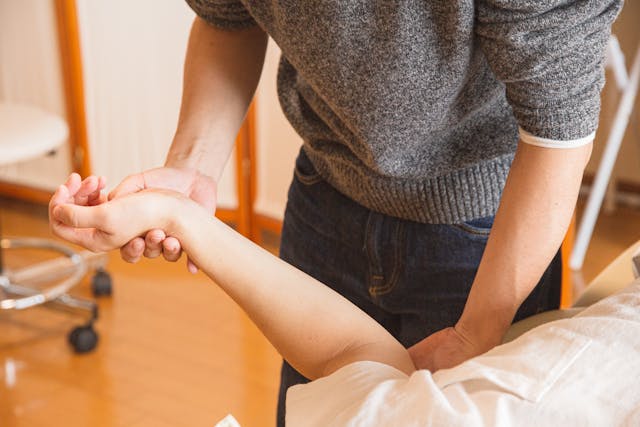
5. Therapeutic Exercise Prescription
Exercise is medicine—and top therapists know how to dose it properly. They build customized exercise programs to address:
- Muscle imbalances and weakness
- Joint instability or stiffness
- Postural deficits
- Mobility limitations
These exercises often evolve over time, progressing in difficulty as the patient improves.
6. Functional Training
Functional training bridges the gap between rehab and real life. Whether you’re trying to return to your sport, work, or daily routine, functional exercises mimic the movements you need to perform confidently and safely. NYC therapists often use bodyweight drills, resistance bands, kettlebells, and balance tools to simulate real-world challenges.
7. Cupping and Instrument-Assisted Soft Tissue Mobilization (IASTM)
These modalities have grown in popularity thanks to athletes and celebrities. Cupping therapy increases blood flow and helps release tight fascia, while IASTM tools (like the Graston Technique®) help break down scar tissue and improve tissue elasticity. When applied by experienced therapists, these techniques can yield fast and noticeable improvements.
8. Vestibular Rehabilitation Therapy
Some of NYC’s best physical therapists specialize in vestibular therapy to treat dizziness, vertigo, and balance disorders. Using specific exercises like gaze stabilization, habituation training, and canalith repositioning (e.g., Epley maneuver), they help restore equilibrium and confidence in movement.
9. Pelvic Floor Therapy
Pelvic health is a growing specialty in physical therapy. NYC therapists trained in pelvic floor rehab help patients with incontinence, pelvic pain, postpartum recovery, and more. Treatment may include internal manual therapy, biofeedback, and targeted strengthening or relaxation exercises.
10. Patient Education and Empowerment
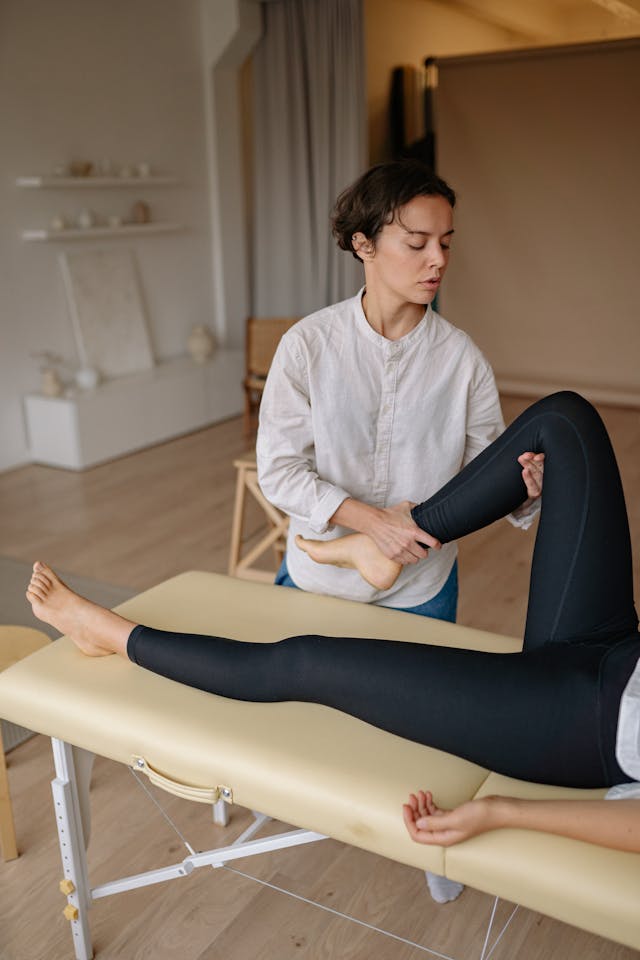 Perhaps the most overlooked “technique” is patient education. The best physical therapists in NYC ensure patients understand their condition, treatment goals, and how to prevent recurrence. Empowering patients with knowledge and self-care strategies ensures long-term success and independence.
Perhaps the most overlooked “technique” is patient education. The best physical therapists in NYC ensure patients understand their condition, treatment goals, and how to prevent recurrence. Empowering patients with knowledge and self-care strategies ensures long-term success and independence.
Top Techniques Used by the Best Physical Therapists in NYC
: Conclusion
Whether you’re recovering from surgery, managing chronic pain, or optimizing performance, the best physical therapists in NYC utilize a holistic and tailored approach. By combining hands-on techniques with clinical reasoning, movement science, and patient education, they help you feel better, move better, and live better.
If you’re looking for expert physical therapy care in NYC, schedule a consultation with ActiveCare Physical Therapy, the #1 PT practice in NYC utilizing these expert PT techniques.
ActiveCare Physical Therapy™
Dr. Karena Wu, PT, DPT, OCS
29 West 38th Street, Suite 601
New York, NY 10018
Phone: (212) 777-4374
Email: staff@bestptnyc.com
Website: https://activecarephysicaltherapy.com
How Physical Therapy Can Help Treat Vertigo
In this post, we’ll explore how physical therapy can help treat vertigo, what to expect during treatment, and who may benefit most from this specialized care. Vertigo is a disorienting and often debilitating condition that affects a person’s sense of balance and spatial awareness. It can cause sensations of spinning, dizziness, and unsteadiness that interfere with daily life. While vertigo can arise from various medical causes, many forms—especially those linked to the vestibular system—respond very well to physical therapy.

What Is Vertigo?
Vertigo is not a condition in itself, but a symptom that signals a disturbance in the body’s balance systems. It is often caused by issues within the inner ear (peripheral vertigo), but can also stem from neurological problems (central vertigo). The most common causes include:
- Benign Paroxysmal Positional Vertigo (BPPV): Occurs when tiny calcium crystals in the inner ear become dislodged and interfere with balance signals.
- Vestibular Neuritis or Labyrinthitis: Inflammation of the inner ear or its nerves, usually due to infection.
- Meniere’s Disease: A chronic condition that affects the inner ear’s fluid balance.
- Post-Concussion Vestibular Dysfunction: Imbalance and dizziness after head trauma.
Symptoms of Vertigo
Vertigo can vary in severity and duration but commonly includes:
- Sensation of spinning or tilting
- Dizziness or lightheadedness
- Nausea or vomiting
- Unsteadiness or loss of balance
- Difficulty focusing the eyes or visual disturbances
How Physical Therapy Can Help
Physical therapy for vertigo—specifically vestibular rehabilitation therapy (VRT)—is an evidence-based, non-invasive approach that addresses issues related to balance and the inner ear. A licensed physical therapist trained in vestibular disorders creates a personalized treatment plan based on the root cause of your vertigo.
1. Canalith Repositioning Maneuvers
If your vertigo is caused by BPPV, a physical therapist may perform repositioning techniques such as the Epley Maneuver or Semont Maneuver. These involve guiding the head and body through a series of movements to reposition dislodged crystals in the inner ear canals, relieving vertigo symptoms—often in just one or two sessions.
2. Gaze Stabilization Exercises
These exercises are designed to help improve visual focus and reduce symptoms such as blurry vision and dizziness. One common method involves moving your head back and forth while keeping your eyes focused on a fixed point.
3. Balance and Postural Training
A key part of vestibular rehab is improving your sense of balance and coordination. Therapists will guide you through standing and walking exercises on stable and unstable surfaces, helping retrain your brain and body to better manage movement and orientation.
4. Habituation Exercises
If your vertigo is triggered by certain head movements or positions, therapists may use repeated exposure to those movements in a controlled way to desensitize the brain and reduce symptoms over time.
5. Strength and Mobility Work
To reduce the risk of falls and improve mobility, physical therapists may incorporate lower body strengthening and flexibility exercises into your routine—particularly for older adults.
Who Can Benefit from Vestibular Physical Therapy?
Physical therapy is especially helpful for patients with:
- BPPV (the most common form of positional vertigo)
- Post-viral vestibular dysfunction
- Post-concussion dizziness or imbalance
- Mild Meniere’s disease symptoms
- Unsteadiness or motion sensitivity
It may also benefit individuals recovering from stroke or neurological conditions that affect balance and spatial orientation.
What to Expect During Your Visit
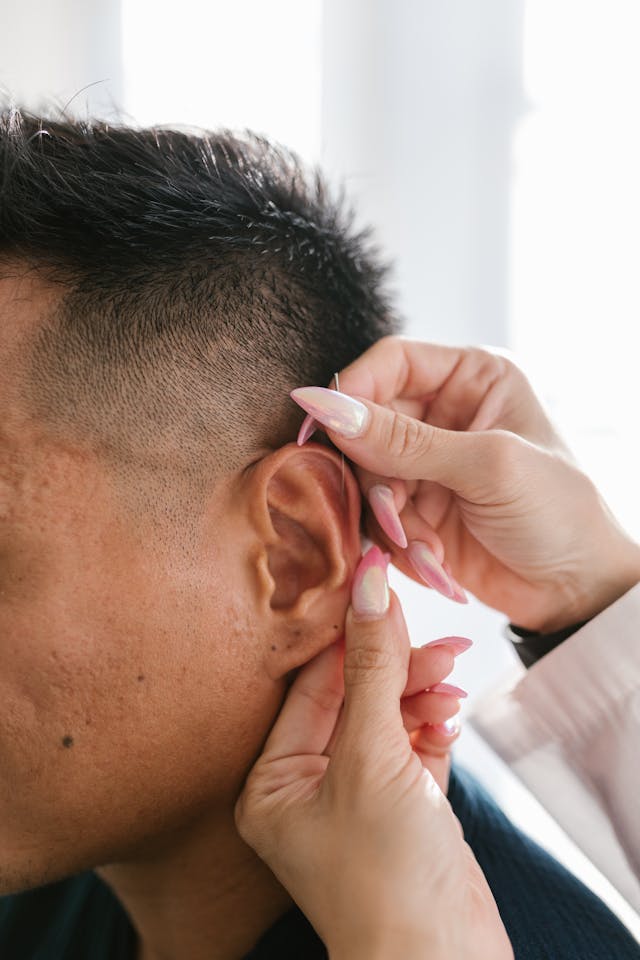 Your first visit will involve a comprehensive evaluation of your symptoms, balance, gait, and vestibular function. Based on the findings, your physical therapist will develop a customized plan tailored to your condition. Treatment sessions are generally brief and can produce rapid improvements, especially in cases of BPPV.
Your first visit will involve a comprehensive evaluation of your symptoms, balance, gait, and vestibular function. Based on the findings, your physical therapist will develop a customized plan tailored to your condition. Treatment sessions are generally brief and can produce rapid improvements, especially in cases of BPPV.
How Physical Therapy Can Help Treat Vertigo: Conclusion
Vertigo can be disruptive and distressing, but effective relief is possible through vestibular physical therapy. Whether your symptoms are mild or severe, a skilled physical therapist can help diagnose the root cause and implement targeted, drug-free treatments to restore your sense of balance and improve your quality of life.
If you’re experiencing recurring dizziness or imbalance, don’t wait—seek help from the expert physical therapists trained in vestibular rehabilitation at ActiveCare Physical Therapy in NYC.
ActiveCare Physical Therapy™
Dr. Karena Wu, PT, DPT, OCS
29 West 38th Street, Suite 601
New York, NY 10018
Phone: (212) 777-4374
Email: staff@bestptnyc.com
Website: https://activecarephysicaltherapy.com
Understanding Temporomandibular Joint (TMJ) Disorders and Physical Therapy Solutions
Temporomandibular joint (TMJ) disorders can be painful, frustrating, and disruptive to daily life. Affecting the jaw joint and surrounding muscles, TMJ disorders may cause jaw pain, headaches, clicking or popping sounds, and difficulty chewing or speaking. Fortunately, physical therapy offers non-invasive, effective solutions for managing and treating TMJ dysfunction. In this post, we’ll break down what TMJ disorders are, their causes and symptoms, and how physical therapy can help restore comfort and function.
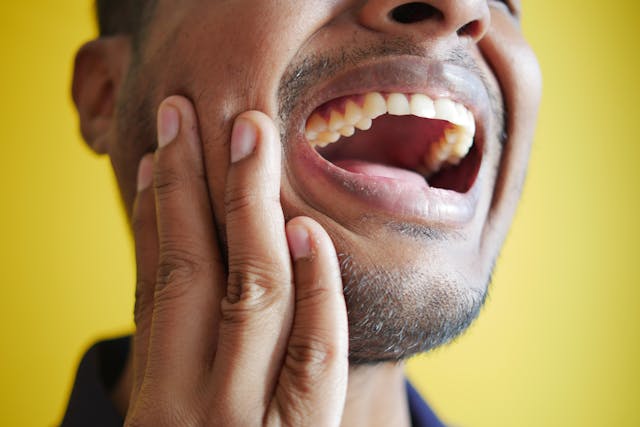
What is a TMJ Disorder?
The temporomandibular joints connect your jawbone to your skull on both sides of the face, just in front of the ears. These joints play a critical role in everyday activities like speaking, chewing, and yawning. TMJ disorders, often referred to as TMD, occur when there’s dysfunction in the joint or surrounding muscles, leading to pain, limited motion, or joint sounds.
Common Causes of TMJ Disorders
TMJ disorders may develop from a variety of factors, including:
- Teeth grinding or clenching (bruxism): Places excessive pressure on the joint and surrounding muscles.
- Poor posture: Especially forward head posture, which can affect jaw alignment and tension in the neck and shoulders.
- Trauma or injury: Direct impact to the jaw or head can result in joint damage.
- Arthritis: Both osteoarthritis and rheumatoid arthritis can affect the TMJ.
- Stress: Emotional stress can lead to jaw clenching and increased muscle tension.
Symptoms of TMJ Dysfunction
TMJ disorders can present a range of symptoms that vary in intensity and duration. Common signs include:
- Jaw pain or tenderness
- Clicking, popping, or grinding sounds during jaw movement
- Limited jaw movement or locking
- Facial pain or soreness
- Earaches or a sensation of fullness in the ears
- Headaches, often around the temples
- Neck and shoulder tension or stiffness
How Physical Therapy Helps TMJ Disorders
Physical therapy is a safe, non-invasive, and effective approach to treating TMJ disorders. A licensed physical therapist will perform a thorough evaluation to assess jaw mobility, posture, muscle tension, and any contributing factors. Based on the findings, they’ll develop a customized treatment plan that may include:
1. Manual Therapy
Hands-on techniques, such as soft tissue massage and joint mobilizations, help reduce muscle tightness, improve joint mechanics, and relieve pain around the jaw, neck, and shoulders.
2. Postural Correction
Since poor posture can contribute to TMJ symptoms, therapists work on improving head, neck, and shoulder alignment through targeted strengthening and posture education.
3. Therapeutic Exercises
Exercises are prescribed to increase jaw mobility, strengthen weak muscles, and reduce compensatory movement patterns. These may include controlled jaw opening, chin tucks, and resisted jaw movements.
4. Relaxation Techniques
Stress is a known trigger for TMJ symptoms. Therapists often incorporate diaphragmatic breathing, muscle relaxation, and mindfulness strategies to reduce tension and prevent clenching.
5. Education and Self-Management
A crucial component of physical therapy is teaching patients how to manage their symptoms at home. This includes guidance on posture, sleeping positions, avoiding harmful habits (like gum chewing), and applying heat or ice as needed.
Who Can Benefit from Physical Therapy for TMJ?

Physical therapy is suitable for most people experiencing TMJ-related symptoms, whether due to muscle tension, joint misalignment, or referred neck pain. It is especially helpful for those who:
- Have chronic jaw or facial pain
- Experience clicking or locking in the jaw
- Suffer from frequent headaches or ear pain without infection
- Clench or grind their teeth
- Want to avoid or delay surgical intervention
Understanding Temporomandibular Joint (TMJ) Disorders and Physical Therapy Solutions: Conclusion
TMJ disorders can interfere with daily activities and quality of life, but physical therapy offers a proven path to relief. By addressing the root causes—whether they be muscular, postural, or stress-related—physical therapy helps reduce pain, restore normal jaw function, and improve long-term comfort.
If you’re struggling with jaw discomfort or suspect you have a TMJ disorder, don’t wait—consult with a skilled physical therapist at ActiveCare Physical Therapy. We specialize in TMJ dysfunction.
ActiveCare Physical Therapy™
29 West 38th Street, Suite 601
New York, NY 10018
Phone: (212) 777-4374
Email: staff@bestptnyc.com
Website: https://activecarephysicaltherapy.com
The Benefits of Kinesio Taping in Physical Therapy
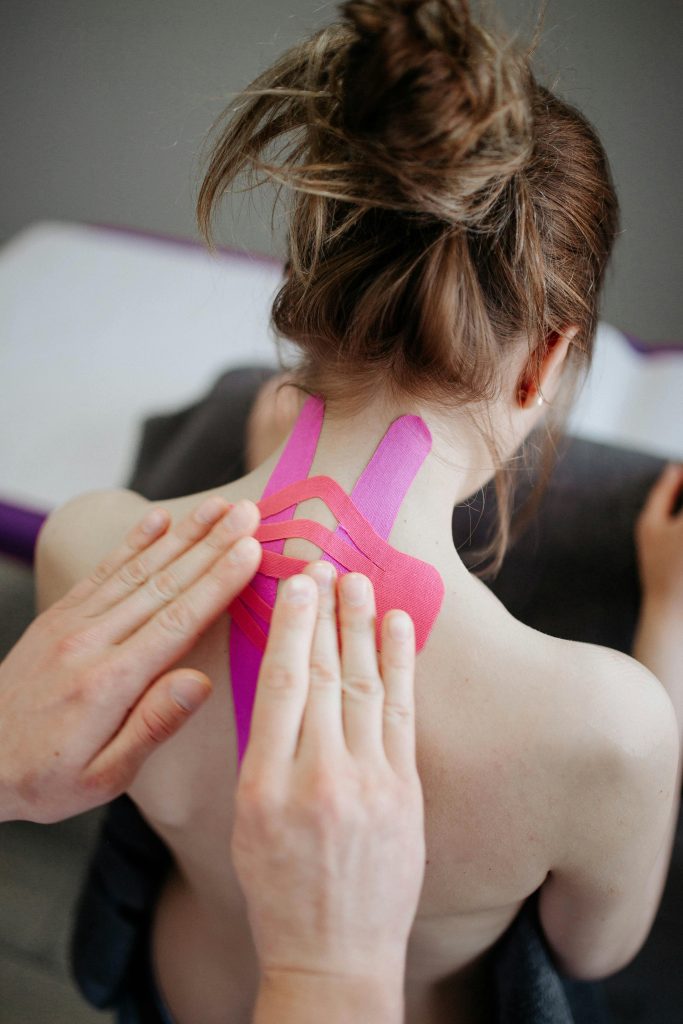 Physical therapy plays a vital role in recovery from injuries, chronic pain, and post-surgical rehabilitation. The right therapy plan can improve mobility, reduce pain, and enhance quality of life. This blog explores the benefits of kinesio taping in physical therapy and highlights how tailored physical therapy solutions can benefit patients.
Physical therapy plays a vital role in recovery from injuries, chronic pain, and post-surgical rehabilitation. The right therapy plan can improve mobility, reduce pain, and enhance quality of life. This blog explores the benefits of kinesio taping in physical therapy and highlights how tailored physical therapy solutions can benefit patients.
Why Physical Therapy Is Essential for Healing
Physical therapy combines scientific techniques with personalized care. Therapists assess each patient’s condition and develop customized plans to target specific goals. This approach helps address pain, improve movement, and prevent future injuries.
Techniques That Set Physical Therapy Apart
- Manual Therapy: Hands-on techniques, including joint mobilization and myofascial release, alleviate pain and improve range of motion.
- Kinesio Taping: Supporting injured muscles and promoting circulation, this technique accelerates recovery.
- Pilates-Based Therapy: Strength-building exercises that enhance core stability and overall strength.
Targeted Solutions for Chronic Pain
- Post-Surgical Recovery: Physical therapy helps patients regain strength and mobility after procedures such as knee replacements or spinal surgeries.
- Chronic Pain Management: Conditions like arthritis, back pain, and TMJ disorders are effectively treated with tailored plans.
- Vertigo Treatment: Balance and dizziness issues are addressed with specialized exercises.
Holistic Recovery for Improved Well-Being
ActiveCare Physical Therapy™ emphasizes holistic care, integrating advanced techniques with patient education. By addressing the root cause of symptoms and guiding patients through recovery, therapists ensure long-term success and satisfaction.
The ActiveCare Physical Therapy™ Difference
Choosing the right physical therapist is critical for effective recovery. ActiveCare Physical Therapy™ offers a team of skilled professionals who use the latest methods to help patients achieve their health goals.
The Benefits of Kinesio Taping in Physical Therapy: Contact Us Today
Discover how advanced physical therapy can help you. Call ActiveCare Physical Therapy™ now for an appointment!
ActiveCare Physical Therapy™
Dr. Karena Wu PT, DPT, OCS
29 West 38th Street, Suite 601
New York, NY 10018
Phone: (212) 777-4374
Email: staff@bestptnyc.com
How Physical Therapy Can Help Treat Chronic Pain
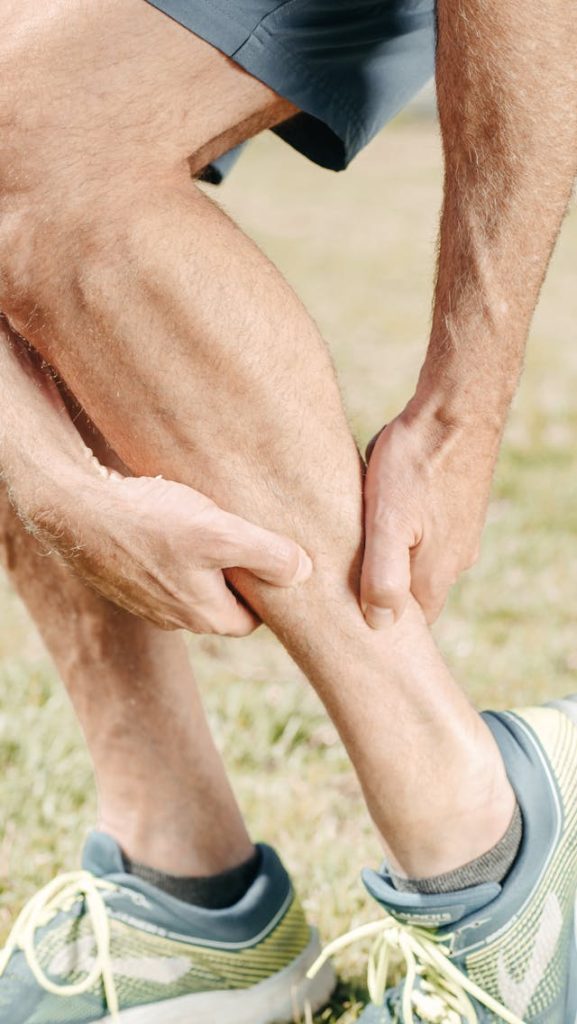 Here we’ll explore how physical therapy can help treat chronic pain and highlight how tailored physical therapy solutions can benefit patients. Physical therapy plays a vital role in recovery from injuries, chronic pain, and post-surgical rehabilitation. The right therapy plan can improve mobility, reduce pain, and enhance quality of life.
Here we’ll explore how physical therapy can help treat chronic pain and highlight how tailored physical therapy solutions can benefit patients. Physical therapy plays a vital role in recovery from injuries, chronic pain, and post-surgical rehabilitation. The right therapy plan can improve mobility, reduce pain, and enhance quality of life.
The Science Behind Physical Therapy Success
Physical therapy combines scientific techniques with personalized care. Therapists assess each patient’s condition and develop customized plans to target specific goals. This approach helps address pain, improve movement, and prevent future injuries.
Advanced Methods Used in Treatment
- Manual Therapy: Hands-on techniques, including joint mobilization and myofascial release, alleviate pain and improve range of motion.
- Kinesio Taping: Supporting injured muscles and promoting circulation, this technique accelerates recovery.
- Pilates-Based Therapy: Strength-building exercises that enhance core stability and overall strength.
Personalized Care for Lasting Results
- Post-Surgical Recovery: Physical therapy helps patients regain strength and mobility after procedures such as knee replacements or spinal surgeries.
- Chronic Pain Management: Conditions like arthritis, back pain, and TMJ disorders are effectively treated with tailored plans.
- Vertigo Treatment: Balance and dizziness issues are addressed with specialized exercises.
Building Strength and Mobility Together
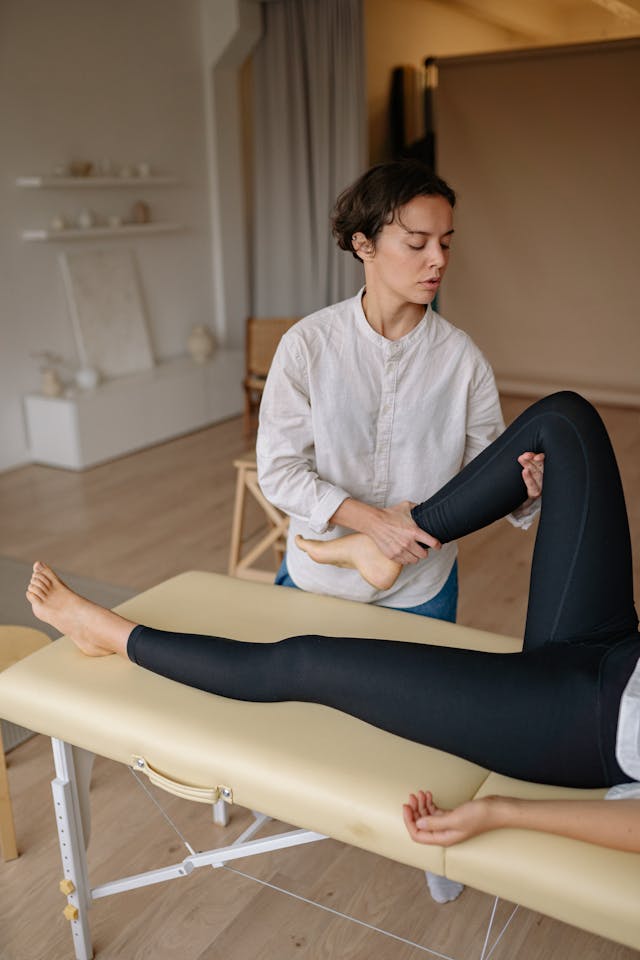 ActiveCare Physical Therapy™ emphasizes holistic care, integrating advanced techniques with patient education. By addressing the root cause of symptoms and guiding patients through recovery, therapists ensure long-term success and satisfaction.
ActiveCare Physical Therapy™ emphasizes holistic care, integrating advanced techniques with patient education. By addressing the root cause of symptoms and guiding patients through recovery, therapists ensure long-term success and satisfaction.
Your Partner in Recovery: ActiveCare Physical Therapy™
Choosing the right physical therapist is critical for effective recovery. ActiveCare Physical Therapy™ offers a team of skilled professionals who use the latest methods to help patients achieve their health goals.
Contact Us Today
Ready to start your recovery journey? Contact ActiveCare Physical Therapy™ today to schedule your first session with Dr. Karena Wu.
ActiveCare Physical Therapy™
Dr. Karena Wu, PT, DPT, OCS
29 West 38th Street, Suite 601
New York, NY 10018
Phone: (212) 777-4374
Email: staff@bestptnyc.com
Exercises and Stretches to Start Your Day Off Right
Let’s explore some effective exercises and stretches to help you start your day off right. Starting your day with a series of exercises and stretches can set a positive tone, boost your energy levels, and enhance your overall well-being. Incorporating a morning routine that includes physical activity can help wake up your muscles, improve flexibility, and prepare your body for the day ahead.
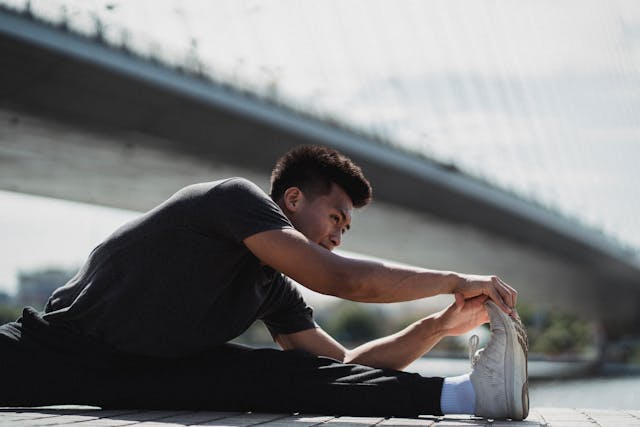
1. Cat-Cow Stretch
The Cat-Cow stretch is a gentle yoga exercise that helps improve spinal flexibility and relieve tension in the back muscles.
How to Perform:
- Start on your hands and knees in a tabletop position with your wrists directly under your shoulders and your knees under your hips.
- Inhale as you arch your back, lifting your head and tailbone toward the ceiling (Cow position).
- Exhale as you round your back, tucking your chin to your chest and drawing your belly button toward your spine (Cat position).
- Repeat the movement for 10-15 repetitions, flowing smoothly between each position.
2. Child’s Pose
Child’s Pose is a restorative yoga pose that gently stretches the lower back and hips, providing relief from stiffness and tension.
How to Perform:
- Start on your hands and knees in a tabletop position.
- Sit back on your heels and stretch your arms forward, lowering your forehead to the floor.
- Hold the pose for 30 seconds to 1 minute, breathing deeply and allowing your back to relax.
3. Downward Dog
Downward Dog is a yoga pose that stretches the entire body, focusing on the hamstrings, calves, and shoulders.
How to Perform:
- Start on your hands and knees in a tabletop position.
- Lift your hips toward the ceiling, straightening your legs and arms to form an inverted V shape.
- Press your heels toward the floor and relax your head between your arms.
- Hold the pose for 30 seconds to 1 minute, breathing deeply.
4. Standing Forward Bend
The standing forward bend stretches the hamstrings, calves, and lower back, helping to improve flexibility and relieve tension.
How to Perform:
- Stand with your feet hip-width apart and your arms by your sides.
- Inhale as you raise your arms overhead, then exhale as you hinge at your hips and reach toward the floor.
- Allow your head and neck to relax, and hold the stretch for 30 seconds to 1 minute.
5. Hip Circles
Hip circles help improve hip mobility and warm up the lower body muscles.
How to Perform:
- Stand with your feet hip-width apart and your hands on your hips.
- Rotate your hips in a circular motion, making large circles in one direction.
- Perform 10 circles in one direction, then switch to the other direction for another 10 circles.
6. Neck Stretches
Neck stretches help relieve tension and improve flexibility in the neck and upper shoulders.
How to Perform:
- Stand or sit with your back straight and your shoulders relaxed.
- Gently tilt your head to the right, bringing your right ear toward your right shoulder.
- Hold the stretch for 15-20 seconds, then switch to the left side.
- Repeat 2-3 times on each side.
7. Arm Circles
Arm circles help warm up the shoulder muscles and improve mobility.
How to Perform:
- Stand with your feet hip-width apart and your arms extended straight out to the sides.
- Make small circles with your arms, gradually increasing the size of the circles.
- Perform 10-15 circles in one direction, then switch to the other direction.
8. Marching in Place
Marching in place is a simple cardio exercise that helps increase your heart rate and warm up your body.
How to Perform:
- Stand with your feet hip-width apart and your arms by your sides.
- Lift your right knee toward your chest while swinging your left arm forward.
- Switch to the left knee and right arm, mimicking a marching motion.
- Continue marching in place for 1-2 minutes.
Exercises and Stretches to Start Your Day: Conclusion
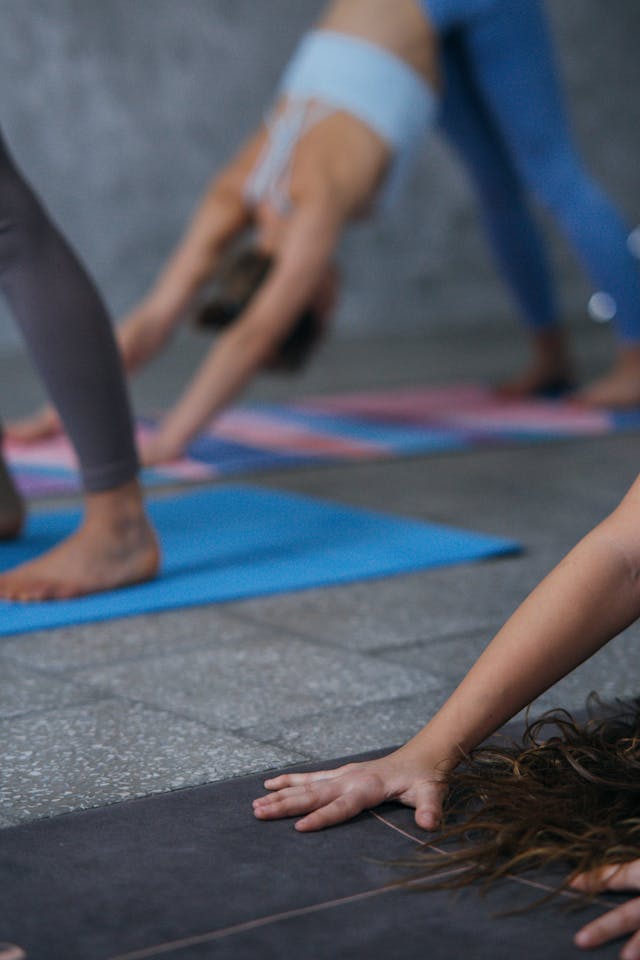
Starting your day with these exercises and stretches can help improve your flexibility, increase your energy levels, and set a positive tone for the day ahead. By incorporating these movements into your morning routine, you can enjoy a healthier, more active lifestyle. Remember to perform each exercise with proper form and control, and consult with a healthcare professional if you have any concerns or underlying conditions.
To learn more about Dr. Karena Wu and ActiveCare Physical Therapy, contact us today.
ActiveCare Physical Therapy™
Dr. Karena Wu, PT, DPT, OCS
29 West 38th Street, Suite 601
New York, NY 10018
Phone: (212) 777-4374
Email: staff@bestptnyc.com
Exercises to Help Improve Your Core Stability
In this post, we’ll explore effective at-home exercises to help improve your core stability. A strong and stable core is essential for overall fitness, injury prevention, and improved performance in daily activities. Core stability exercises target the muscles in your abdomen, lower back, hips, and pelvis, providing a solid foundation for movement.

Exercises to Help Improve Your Core Stability
1. Plank
The plank is a fundamental core stability exercise that engages multiple muscle groups, including the abdominals, lower back, and shoulders.
How to Perform:
- Start in a push-up position with your elbows bent at 90 degrees and your forearms resting on the floor.
- Keep your body in a straight line from head to heels, engaging your core and glutes.
- Hold the position for 20-60 seconds, gradually increasing the duration as your strength improves.
2. Side Plank
The side plank targets the obliques and improves lateral core stability.
How to Perform:
- Lie on your side with your legs extended and your feet stacked on top of each other.
- Prop yourself up on your elbow, keeping it directly under your shoulder.
- Lift your hips off the ground, forming a straight line from head to heels.
- Hold the position for 20-60 seconds on each side.
3. Bird-Dog
The bird-dog exercise enhances core stability and balance by engaging the back, glutes, and abdominals.
How to Perform:
- Start on your hands and knees in a tabletop position.
- Extend your right arm forward and your left leg backward, keeping your hips level and your core engaged.
- Hold the position for a few seconds, then return to the starting position.
- Repeat on the opposite side, extending your left arm and right leg.
- Perform 10-15 repetitions on each side.
4. Dead Bug
The dead bug exercise targets the deep core muscles and improves coordination.
How to Perform:
- Lie on your back with your arms extended toward the ceiling and your knees bent at 90 degrees.
- Slowly lower your right arm and left leg toward the floor while keeping your lower back pressed against the ground.
- Return to the starting position and repeat on the opposite side.
- Perform 10-15 repetitions on each side.
5. Russian Twists
Russian twists engage the obliques and improve rotational core stability.
How to Perform:
- Sit on the floor with your knees bent and your feet flat on the ground.
- Lean back slightly while keeping your back straight and your core engaged.
- Hold your hands together in front of you and twist your torso to the right, then to the left, while keeping your feet in place.
- Perform 15-20 repetitions on each side.
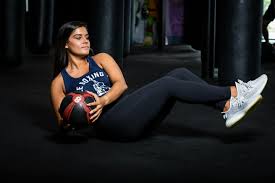
6. Glute Bridge
The glute bridge strengthens the glutes, lower back, and core muscles.
How to Perform:
- Lie on your back with your knees bent and your feet flat on the floor, hip-width apart.
- Press through your heels and lift your hips toward the ceiling, squeezing your glutes at the top.
- Hold the position for a few seconds, then lower your hips back down.
- Perform 10-15 repetitions.
7. Leg Raises
Leg raises target the lower abdominals and improve core stability.
How to Perform:
- Lie on your back with your legs extended and your hands placed under your hips for support.
- Keep your legs straight and lift them toward the ceiling until they form a 90-degree angle with your body.
- Slowly lower your legs back down without letting them touch the ground.
- Perform 10-15 repetitions.
Exercises to Help Improve Your Core Stability: Conclusion
Incorporating these at-home exercises into your daily routine can help improve your core stability, enhance your overall fitness, and reduce the risk of injuries. Remember to perform each exercise with proper form and control, and gradually increase the intensity as your strength improves. By staying consistent with these exercises, you can build a strong and stable core that supports all your physical activities.
For all physical therapy concerns, contact Karena Wu at ActiveCare Physical Therapy in NYC today.
ActiveCare Physical Therapy™
Dr. Karena Wu PT, DPT, OCS
29 West 38th Street, Suite 601
New York, NY 10018
Phone: (212) 777-4374
Email: staff@bestptnyc.com
Exercises to Help Relieve Back Pain and Stiffness
In this post, we’ll explore effective at-home exercises to help relieve back pain and stiffness. Back pain and stiffness are common issues that many people experience due to various factors such as poor posture, sedentary lifestyle, and muscle imbalances. Incorporating specific exercises into your routine can help alleviate discomfort, improve flexibility, and strengthen the muscles that support your spine.
1. Cat-Cow Stretch
The Cat-Cow stretch is a gentle yoga exercise that helps improve spinal flexibility and relieve tension in the back muscles.
How to Perform:
- Start on your hands and knees in a tabletop position with your wrists directly under your shoulders and your knees under your hips.
- Inhale as you arch your back, lifting your head and tailbone toward the ceiling (Cow position).
- Exhale as you round your back, tucking your chin to your chest and drawing your belly button toward your spine (Cat position).
- Repeat the movement for 10-15 repetitions, flowing smoothly between each position.
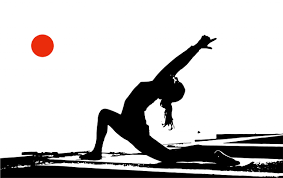
2. Child’s Pose
Child’s Pose is a restorative yoga pose that gently stretches the lower back and hips, providing relief from stiffness and tension.
How to Perform:
- Start on your hands and knees in a tabletop position.
- Sit back on your heels and stretch your arms forward, lowering your forehead to the floor.
- Hold the pose for 30 seconds to 1 minute, breathing deeply and allowing your back to relax.
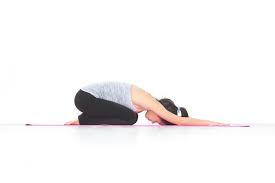
3. Pelvic Tilts
Pelvic tilts help strengthen the lower back and abdominal muscles while promoting spinal mobility.
How to Perform:
- Lie on your back with your knees bent and feet flat on the floor, hip-width apart.
- Flatten your lower back against the floor by tightening your abdominal muscles and tilting your pelvis slightly upward.
- Hold the position for a few seconds, then release.
- Repeat the exercise for 10-15 repetitions.
4. Bridge Exercise
The bridge exercise strengthens the glutes, hamstrings, and lower back muscles, helping to support the spine and alleviate pain.
How to Perform:
- Lie on your back with your knees bent and feet flat on the floor, hip-width apart.
- Press through your heels and lift your hips toward the ceiling, squeezing your glutes at the top.
- Hold the position for a few seconds, then lower your hips back down.
- Repeat the exercise for 10-15 repetitions.
5. Seated Forward Bend
The seated forward bend stretches the lower back, hamstrings, and calves, helping to relieve tension and improve flexibility.
How to Perform:
- Sit on the floor with your legs extended straight in front of you.
- Inhale and lengthen your spine, then exhale as you hinge at your hips and reach forward toward your feet.
- Hold the stretch for 30 seconds to 1 minute, breathing deeply and allowing your back to relax.
6. Knee-to-Chest Stretch
The knee-to-chest stretch gently stretches the lower back and glutes, providing relief from stiffness and discomfort.
How to Perform:
- Lie on your back with your knees bent and feet flat on the floor.
- Bring one knee up toward your chest, holding it with both hands.
- Hold the stretch for 20-30 seconds, then switch to the other leg.
- Repeat the stretch 2-3 times on each side.
7. Spinal Twist
The spinal twist helps improve spinal mobility and relieve tension in the lower back.
How to Perform:
- Lie on your back with your knees bent and feet flat on the floor.
- Extend your arms out to the sides in a T position.
- Slowly lower both knees to one side while keeping your shoulders flat on the floor.
- Hold the stretch for 20-30 seconds, then switch to the other side.
- Repeat the stretch 2-3 times on each side.
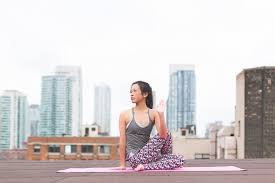
Exercises to Help Relieve Back Pain: Conclusion
Incorporating these at-home exercises into your daily routine can help relieve back pain and stiffness, improve flexibility, and strengthen the muscles that support your spine. Remember to perform each exercise with proper form and control, and consult with a healthcare professional if you have any concerns or underlying conditions. By staying consistent with these exercises, you can enjoy a healthier, more comfortable back and overall well-being.
Contact Information
ActiveCare Physical Therapy™
29 West 38th Street, Suite 601
New York, NY 10018
Phone: (212) 777-4374
Email: staff@bestptnyc.com
Website: https://activecarephysicaltherapy.com/
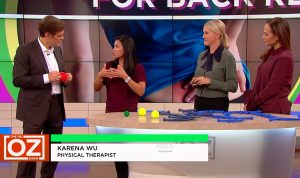 ActiveCare Physical Therapy, PC
ActiveCare Physical Therapy, PC
29 West 38th Street
Suite 601
New York, NY 10018

